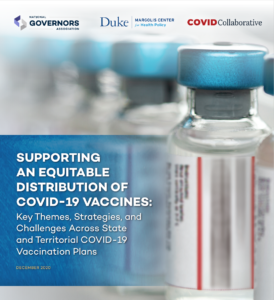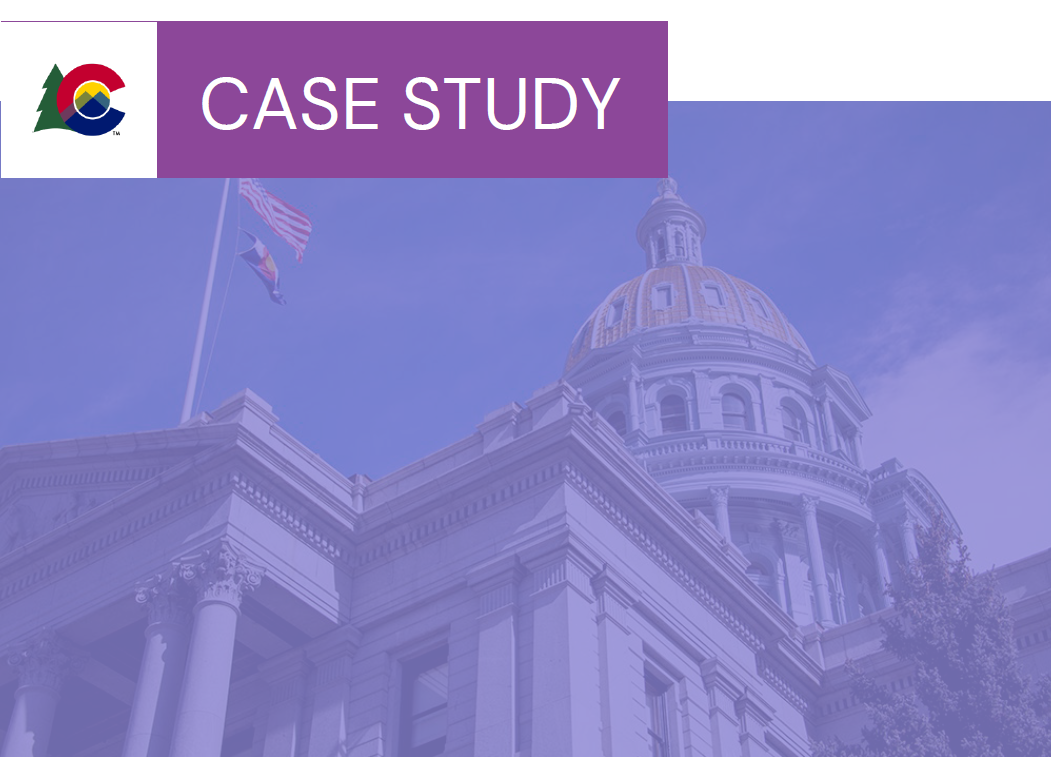This report looks at key themes, strategies, and challenges across State and Territorial COVID-19 vaccination plans.
Executive Summary
Ensuring the rapid development, distribution, and widespread public uptake of a safe and effective COVID-19 vaccine will be a critical element in containing the COVID-19 pandemic and resuming normal economic, educational, and social activities. One or more vaccine candidates will likely be authorized for use in the next few days, and states and localities will need to be ready to efficiently and equitably distribute and administer the vaccines. Federal, state, territorial, tribal, and local governments and partners must work collaboratively to ensure that vaccines are distributed in a manner that protects public health and safeguards those at highest risk for severe COVID-19 disease.
Governors of states and territories, working in close collaboration with local partners, will have responsibility for the “last mile” of COVID-19 vaccine distribution, which will include receiving vaccine allocations from the federal government; managing the systems for ordering, distributing, and monitoring them; and supporting the administration of vaccines in a wide variety of health care and community settings. To make vaccinations available for hundreds of millions of people across the country, states must expand their reach by increasing capacity and enhancing data systems in ways that have never been done before. To ensure uptake of the vaccine, states must also engage and communicate with the public in new and creative ways, with a particular focus on reaching those who may face barriers to access or be hesitant to get the vaccine.
To assist Governors and their state partners in ongoing vaccine planning efforts, the National Governors Association, the Duke-Margolis Center for Health Policy, and the COVID Collaborative conducted a qualitative analysis of all publicly available state and territorial COVID-19 vaccination plans released as of the date of this publication. The analysis aims to support identification of key issues and promote sharing of promising practices across the country, while recognizing that the plans are initial drafts that will be refined by states and territories as they engage with the Centers for Disease Control and Prevention (CDC) and respond to new information and challenges that continue to emerge. Key areas of analysis include:
- ❯ Setting a Vision: Vaccine Plan Goals, Principles, and Lessons Learned
- ❯ Cross-Cutting Challenges and Unique Considerations for States and Territories
- ❯ Determining Allocations to Critical Populations
- ❯ Planning for A Phased Approach: Distribution Strategies Across Phases
- ❯ Ensuring Effective Distribution and Management
- ❯ Building a Robust Data Infrastructure for Managing, Tracking, and Reporting Vaccine Information
- ❯ Supporting Equity in Distribution and Access
- ❯ Communicating with the Public and Engaging Vaccination Partners
Considerations for Governors
As interim planning documents in a quickly evolving environment, state and territorial vaccination plans reflect a significant range of progress and detail regarding the various processes, partnerships, and systems that will need to be in place to support timely and equitable distribution of forthcoming COVID-19 vaccines. Plans will continue to evolve as more information is gained on vaccine safety, efficacy, and availability; as federal partners continue to provide guidance and feedback on state plans; and as states continue to gain experience through their collaborative planning processes. Despite this ongoing iterative process, a review of initial state COVID-19 vaccination plans reveals a number of shared barriers that states will face, as well as common themes in how states are approaching these challenges. As Governors continue to lead statewide vaccine distribution and administration efforts, understanding these common challenges and innovative approaches can assist state leaders with refining their own planning efforts. To continue to iterate and improve on these initial plans, Governors may want to consider the following actions to strengthen their vaccination planning efforts:
✔ Articulate clear principles and goals to guide partners in vaccine planning efforts, such as equitable access, inclusive planning, transparent and frequent communication;
✔ Meaningfully engage local health departments, representatives from high-risk populations, health systems, providers, community leaders, and organizations serving at-risk populations in planning activities;
✔ Set criteria for priority allocation of vaccines that are consistent with recommendations from the CDC’s Advisory Committee on Immunization Practices (ACIP), responsive to state needs and clearly communicated to the public;
✔ Ensure that critical coordination structures are in place to flexibly shift strategies to respond to changing dynamics in vaccine availability, demand, and emerging challenges;
✔ Assess capacity for vaccine administration, increase provider enrollment efforts, and examine strategies to expand surge capacity through non-traditional providers such as paramedics and emergency medical technicians (EMTs), dentists, veterinarians, and health professional school students;
✔ Assess capacity for vaccine transport, logistics, and distribution, including using the National Guard for such purposes if needed;
✔ Address logistical issues early, such as sufficient capacity to store vaccines in low-temperature freezers and provide supplies and personal protective equipment (PPE);
✔ Deploy and test data management and reporting systems to ensure accountability for results, ability to adjust, and transparency to the public;
✔ Train key public health personnel, health systems, and partners on the elements of the vaccination plans and subject the plans to Tabletop and Functional exercises as time permits;
✔ Ensure necessary connections and agreements are in place to facilitate reporting of vaccination data to the CDC and sharing of immunization data among jurisdictions to the extent allowable under state law;
✔ Invest in education campaigns to build public confidence in vaccines, including campaigns with trusted local messengers, especially for historically marginalized communities; and
✔ Partner with community leaders and organizations serving high-risk communities to conduct targeted outreach and address potential barriers to access, which could include making vaccines available in non-traditional sites such as churches, workplaces, mobile clinics, and other convenient and familiar community locations.














